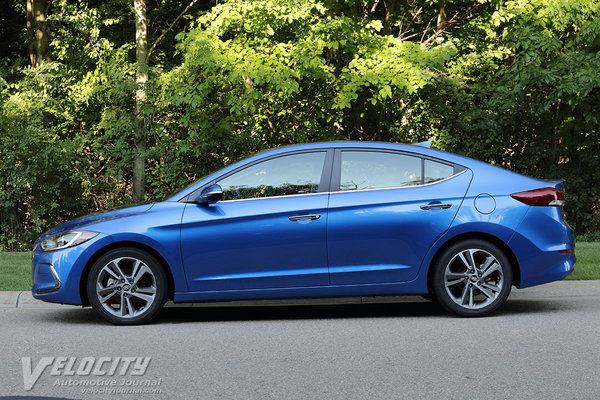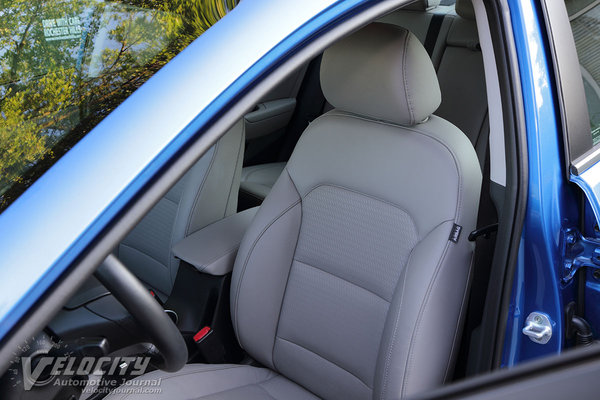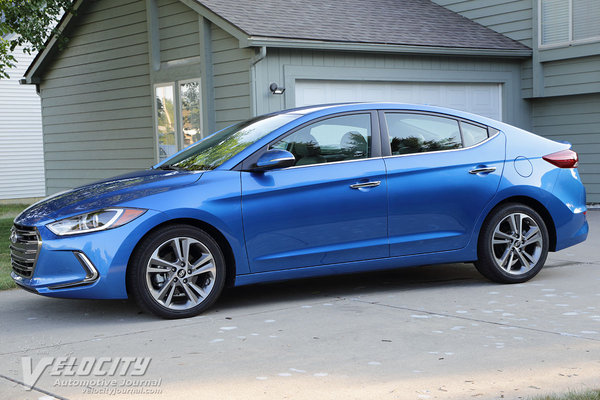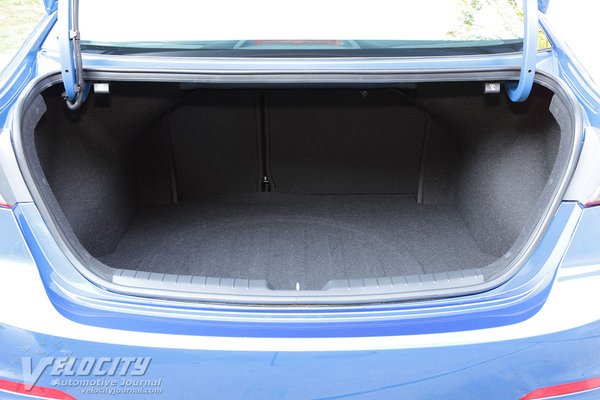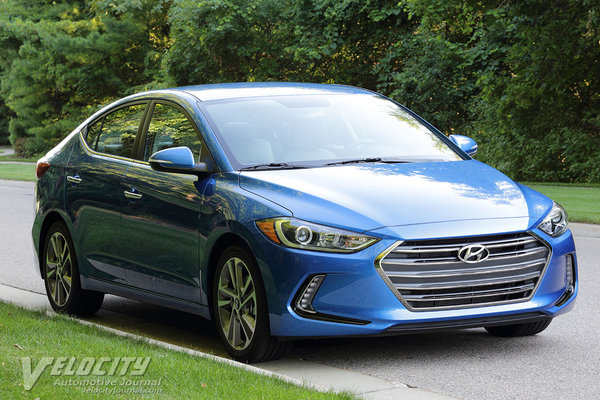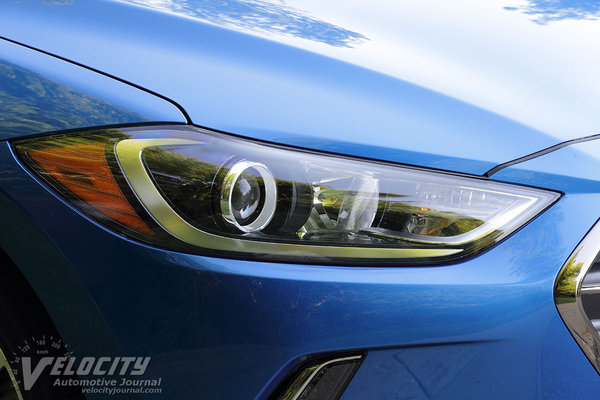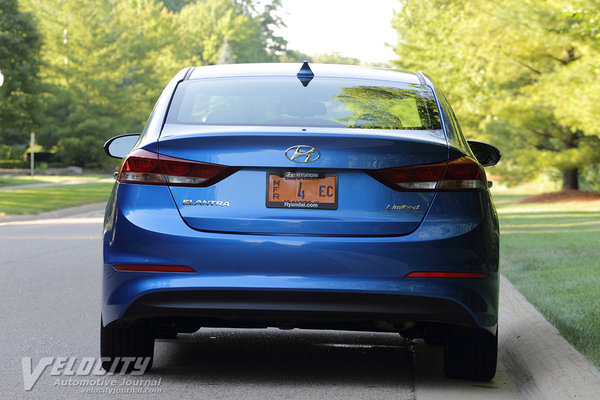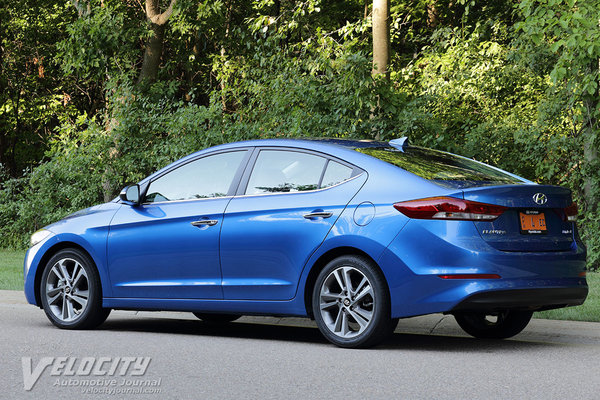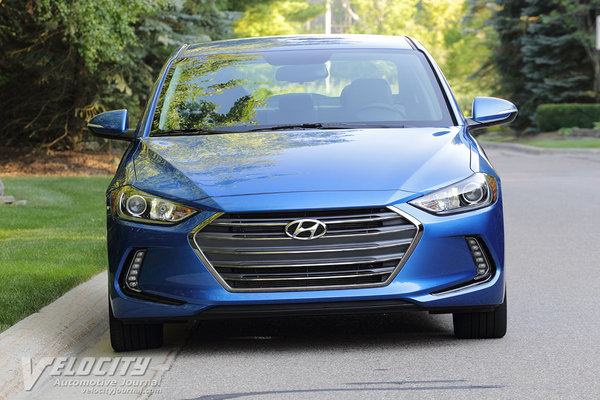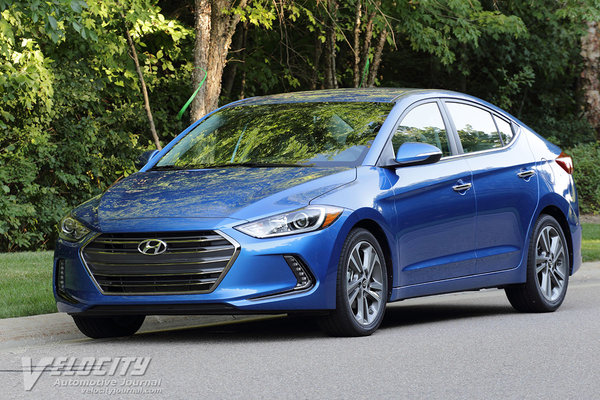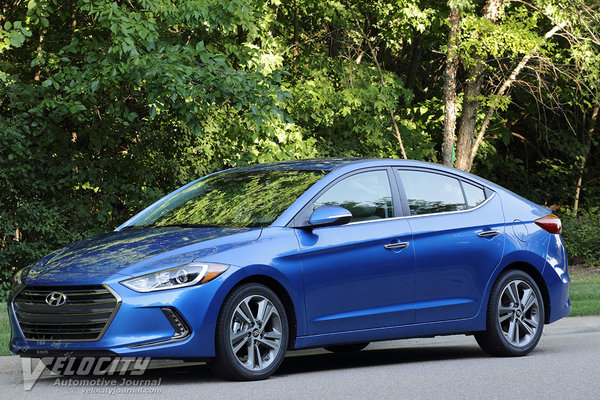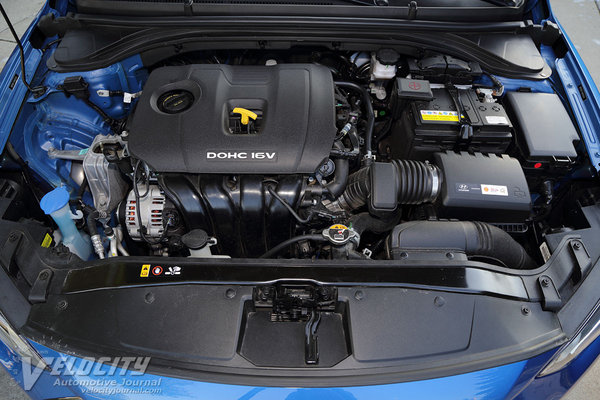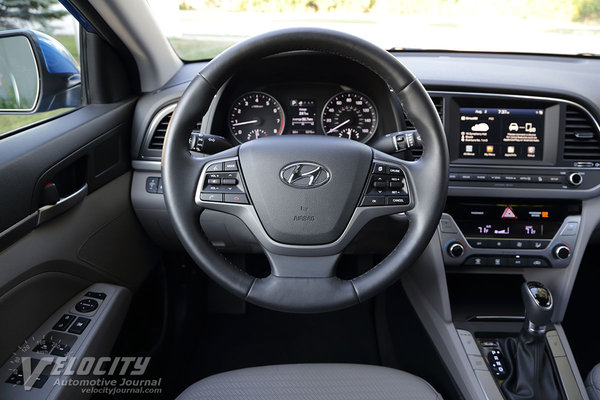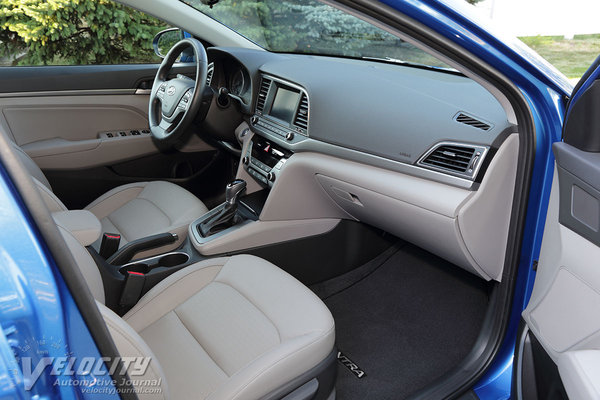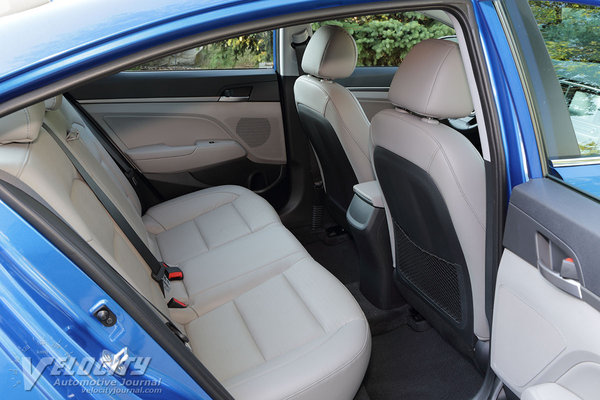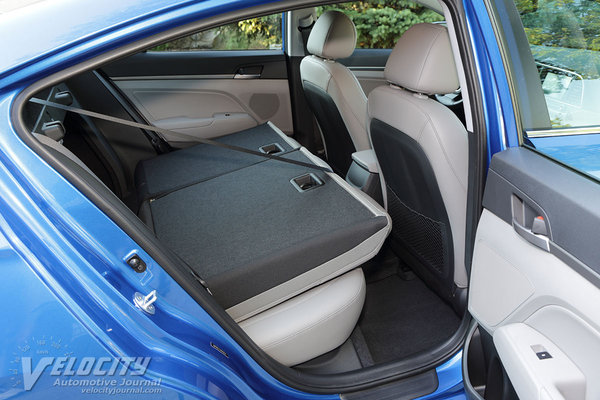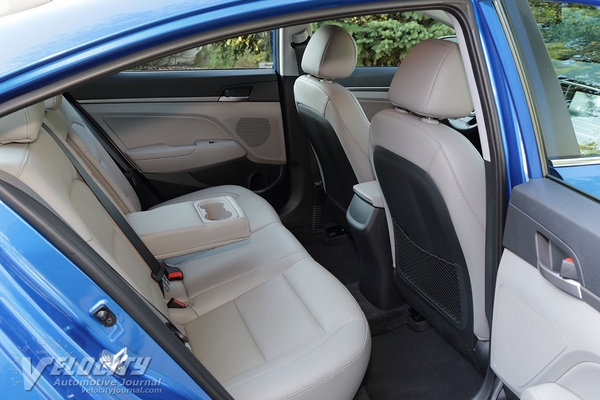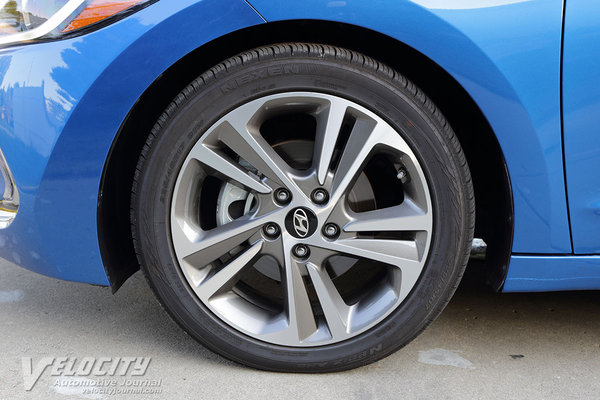2017 Hyundai Elantra Limited
09/30/2017
Shahed Hussain
Hyundai has transformed the Elantra from a slightly stodgy 4-door into a competent alternative to its Japanese and American competitors. With three models in the lineup, the Elantra is simple to configure. The 2017 base SE starts at $17,150 and ranges to $22,350 for the Limited. As with most other compact sedans, the top trim level pricing often overlaps with larger midsize sedans, so not surprisingly, the base Sonata SE is actually less expensive than the Elantra Limited. For 2018, Hyundai has expanded the model range to six variants: SE, SEL, Value Edition, Eco, Sport, and Limited. Two new engines are now available: a 1.4L and 201-bhp 1.6L turbo, along with a 7-speed dual-clutch transmission.
We tested the 2017 Elantra Limited equipped with a 6-speed automatic mated to a 2.0L inline-4 driving the front wheels. A six-speed manual is standard on the Elantra SE only. Notable standard equipment includes heated front and rear leather seats, power driver's seat with adjustable lumbar support, rearview camera, Blind Spot Detection, and pushbutton start. Available options include sunroof, HID headlights, navigation, Infinity audio system, smart cruise control, and lane keep assist.
Hyundai's 2.0L all-aluminum inline-4 is rated at 147-hp @ 6,200 RPM and a torque output of 132 lb.-ft. @ 4,500 RPM. Using the Atkinson Cycle for enhanced fuel efficiency, the Elantra gets a 28/37 MPG EPA city/hwy. rating with the 6-speed automatic. The 6-speed manual is actually less efficient, dropping 2 MPG, and 1 MPG behind in the city and highway, respectively.
Hyundai adopted the typical MacPherson strut front suspension with a stabilizer bar. At the rear is a semi-independent torsion beam axle with coil springs and gas-filled dampers. Steering is via an electrically-assisted rack-and-pinion setup with 2.7 turns lock-to-lock. The Elantra Limited is equipped with an all-disc brake system and Nexen P225/45 R17 all-season tires are mounted on 17-inch diameter alloy wheels. Other Elantras get rear drums and smaller 16-inch diameter alloy or 15-inch diameter steel wheels. ABS and stability control are standard. Elantra Limited curb weight ranges from 2,811 lbs. to 2,976 lbs.
The Elantra's interior design uses quality materials with mostly soft touch surfaces. Perforated leather seats provide moderate lateral support and decent comfort. Both front seats have 6-way adjustability, but the driver's seat has power adjustments and lumbar support. Headroom is adequate for front seat occupants up to 6 ft. tall. Rear passengers also benefit from adequate legroom and headroom for occupants up to 5'-10" tall. The center rear position has a hard seatback, reducing comfort for longer trips.
A leather-wrapped steering wheel has integrated audio, phone and cruise controls. Dual 12V outlets, USB and an analog audio input are conveniently located on the center console, along with another 12V outlet in the center console bin. The infotainment system interface is intuitive, and includes Android and CarPlay support.
Like other Atkinson-cycle engines, Hyundai's 2.0L inline-4 has less power than other powerplants in its class. Throttle response below 2,000 RPM is predictably weak, but improves considerably above 3,000 RPM. The 6-speed automatic has Eco and Sport modes, along with a manual shift mode; all modes had nearly seamless shift characteristics. We preferred the Sport or Manual mode in urban driving for faster acceleration, but since 6th gear is locked out in Sport mode, the Normal mode is preferred for highway cruising.
Hyundai tuned the Elantra for a comfortable ride as a priority, and makes no sporting pretensions. Initial turn-in is accompanied by moderate body roll. The torsion beam axle sometimes hops over bumps, but the damper and spring tuning mostly keeps the rear axle planted on the road. The four wheel discs provide ample stopping power with a firm brake pedal and progressive actuation. The electrically-assisted steering system has moderate effort and transmits road textures accurately. We noticed some road and tire noise at highway speeds, but it was not especially objectionable.
The Elantra has become a competent alternative to the segment leaders such as the Civic, Corolla, Focus and Mazda3. Compact sedans are a fiercely competitive segment, so the Elantra has a tough time distinguishing itself from its rivals. Hyundai has clearly recognized that the 2018 Elantra lineup needed some updates, so the two new turbo powerplants and dual-clutch transmission should give compact car buyers reason to reconsider the Elantra.

